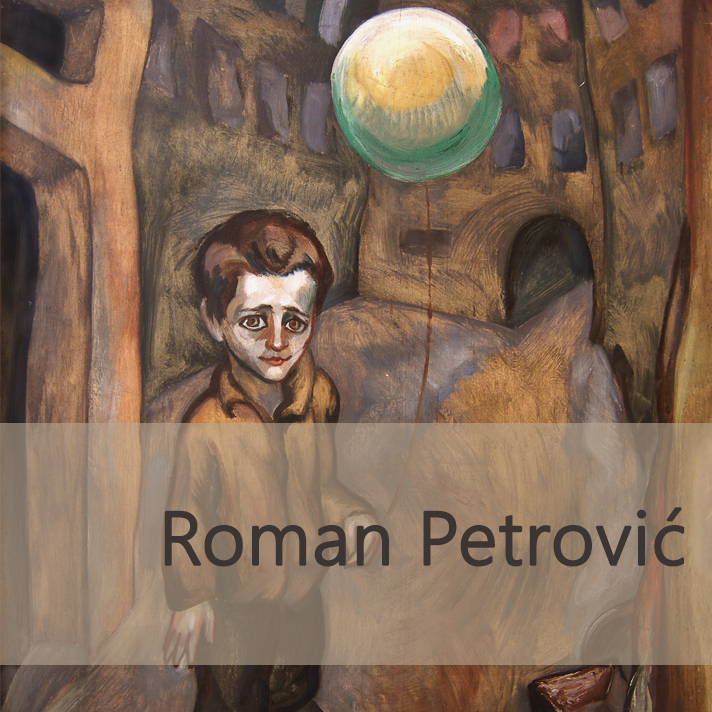
Written by Maja Abdomerović
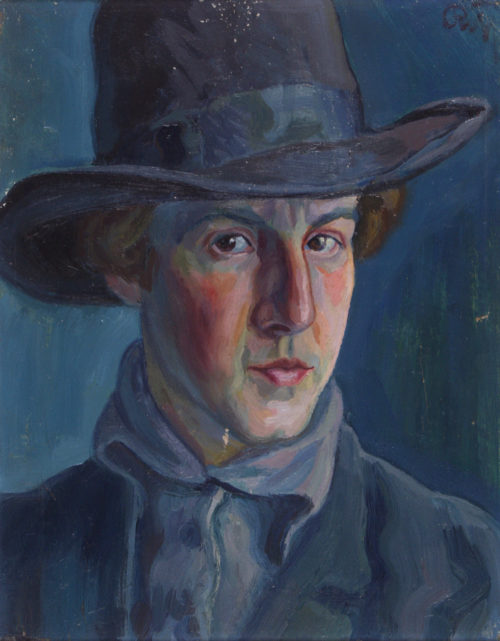
Roman Petrović, Self-portrait, oil on cardboard, c. 1919/23
Roman Petrović was present in the art scene of Bosnia and Herzegovina for three decades – from his first appearance at the exhibition in 1917 until his death – and virtually belongs to the generation of artists who created the history of Bosnian-Herzegovinian (and Yugoslav) painting between the two wars.
After regular education in Mostar and Sarajevo, his artistic education begins at the Academy in Petrograd (a few months period), continues in Cracow, and until the outbreak of the First World War he resides at the Higher School for Arts and Crafts in Zagreb. Then he returns to Cracow, then to Budapest, where he remains until his return to Sarajevo in 1917.
Schooling in several cultural centers and receiving various influences in all subsequent stylistic diversity that accentuated the role of Roman Petrović in our art history, which was the cause of headaches for critics.
They called him “a painter-wanderer” and even though they were not always understanding, they found an expression of strong talent and pure artistic value even his most unsuccessful works.
Roman Petrović was often described as “unrepeatable”. He was extraordinary talented, confronting all modern and hyper-modern art movements. “Here I have given myself to you as a cubist, a naturalist, a classist, a modernist, and an impressionist. Now look for me.” – he said when he appeared on the first exhibition of artistic group “Four” (Roman Petrović, Karlo Mijić, Đoko Mazalić and Sigo Summerecker).
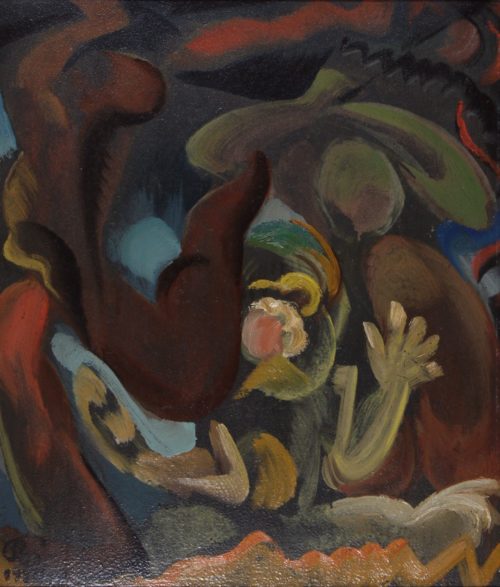
Roman Petrović, Composition, oil on cardboard, 1920
The paintings, watercolors and drawings created during the period between 1917 and 1924 show the balance of more visual elements and solutions. The shape geometry is even more pronounced. Roman shows an equal tendency to coloristicly expressive and constructivist solutions. This type of style pluralism was called cubo-constructivism by Vladimir Maleković. A lonely example of abstract expressionism from this period is his painting “Composition”.
Since 1924, two tendencies can be observed in Petrović’s work, one is a magical realism, based on the application of the Cubist process in the simplification and stylization of natural forms, while the other is more focused on a clearer neo-realism on which he will later build his social art.
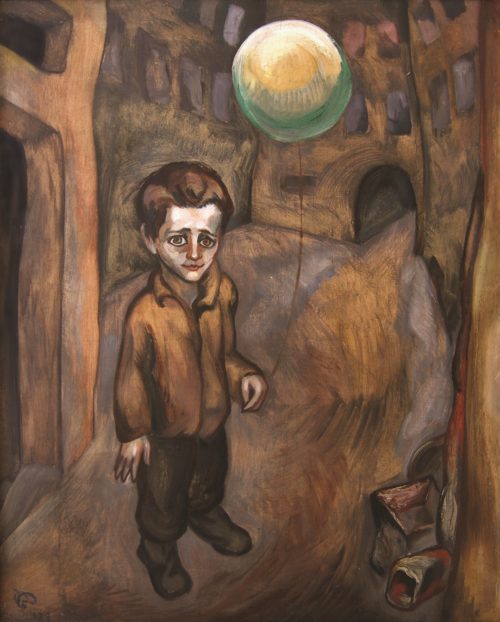
Roman Petrović, Boy with a Balloon, oil on plywood, 1939
At the end of the decade he begins to work on his biggest and most famous series “Street Children” – among the first paintings was the “Boy with a Balloon”. The backbone theme are abandoned children. These paintings are crafted with greater care than all the previous works, dominated by gray and brown hues, which emphasize even more the bitterness of the atmosphere.
This theme is extended by similar scenes from the urban circle of Sarajevo – images of cafes, prostitutes, beggars, circus…
The “Street Children” series is a powerful episode in Bosnian-Herzegovinian painting that laid the foundations for a later socially engaged art.
Throughout the time of dealing with social themes, Roman Petrović painted and drawn from purely artistic motives. The images created during this period bear the characteristics of Expressionism with strong colors.
Several thematic motifs remain permanently present in Roman’s painting, portrait (especially self-portrait), landscape, still life, nudes and sacral works. Figurative compositions with motifs from the urban and the rural milieu are also numerous. Along with Mazalić, he enriched iconographicaly Bosnian-Herzegovinian painting of the twenties.
In the group of portraits particularly stand out the portraits of his sisters Kazimira, the dual portrait of his mother and sister, as well as the portrait of Tin Ujević.
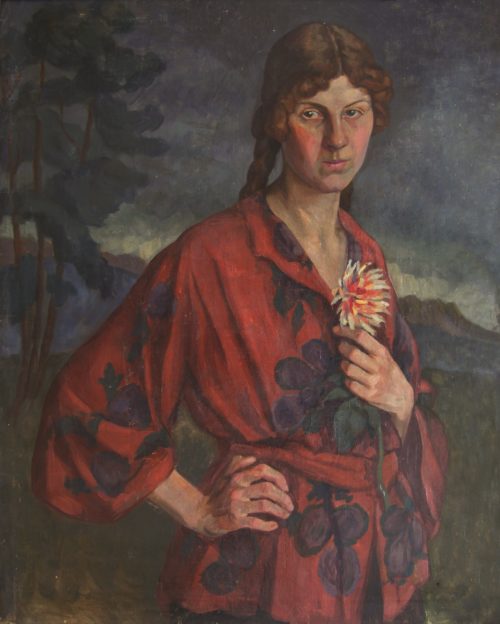
Roman Petrović, Portrait of the Sister, oil on canvas, 1917
In his overall opus, especially during the thirties, a significant place occupies the painting of the iconostasis and the interiors of the Orthodox churches (Donji Vakuf, Travnik, Sokolac, Mokro). Roman did not strive to stereotypical religious solutions, so these works, in addition to the canonical limitations, bear the characteristics of his style.
He spent the Second World War in Sarajevo. In this period he did not paint a lot, so only a couple of paintings, which do not have any major significance in his opus, is preserved.
Throughout his creative life, Roman Petrović was a role model, a teacher and an authority to many young artists, so it was logical that he was elected as a president of the Association of Visual Artists of Bosnia and Herzegovina (ULUBiH) immediately after its founding. As part of ULUBiH, a gallery bearing his name was opened in 1980.
The text about Roman Petrović was written in 2006 for informative panels produced by the National Gallery of Bosnia and Herzegovina for all primary and secondary schools in Sarajevo Canton as part of the project “ The streets bear their names “. This project was the first major educational project to be carried out at the National Gallery of Bosnia and Herzegovina after the war and the only one supported by the Ministry of Education and the Education and Pedagogical Institute. Panels with texts about the life and work of artists and reproductions of their most significant works from the collection of the National Gallery of Bosnia and Herzegovina were distributed to schools. This was a way for the Gallery to enter the schools in hope that in return it would bring schools to the Gallery.
The “School Programme” is a series of smaller exhibitions of the most important artists from our collection with which we started in 2015 with the aim to enable the school population to get acquainted with the art heritage of Bosnia and Herzegovina and the collection of the National Gallery of Bosnia and Herzegovina. Roman Petrović is the latest exhibition from the “School Programme” and was preceded by exhibitions of works by authors such as Mica Todorović, Behaudin Selmanović, Branko Radulović, Jovan Bijelić, Ferdinand Hodler and the exhibition of sculptures “Please Touch the Art”.
“Brave Teachers” bring their students to these exhibitions. Others are likely to wait for the Ministry of Education’s recommendation … and take the kids to skiing and swimming. Upon the recommendation of the Minister.
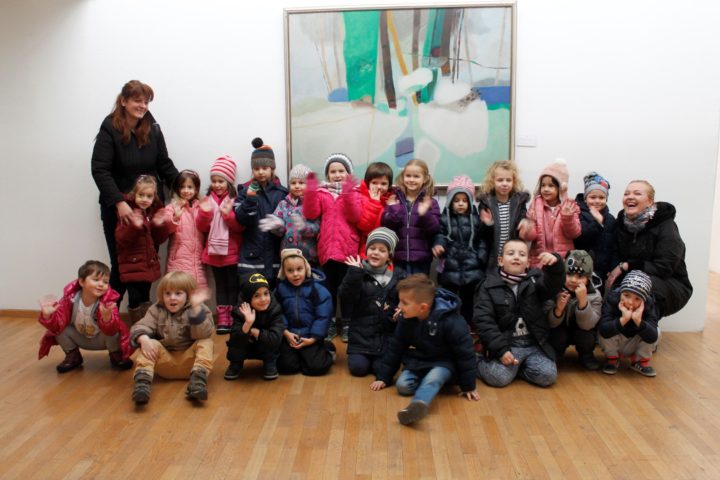
Visit of kindergarten „Slavuj“ in 2016
